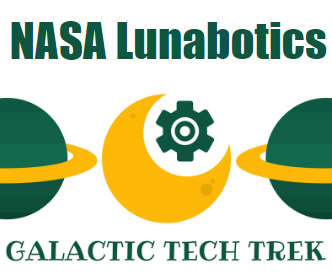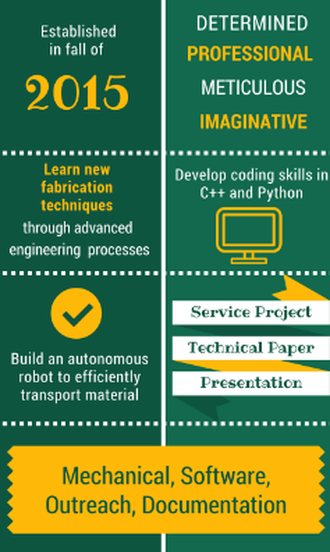|
Competition:
NASA Lunabotics Purpose:: For university-level students to design and build a mining robot that can traverse the simulated Martian chaotic terrain then excavate the basaltic regolith simulation (called Black Point-1 or BP-1) and the ice simulation (gravel) and return the excavated mass for deposit into the Collector Bin to simulate an off-world mining mission Description: The complexities of the challenge include the abrasive characteristics of the basaltic regolith simulation, the weight and size limitations of the mining robot and the ability to tele-operate it from a remote Mission Control Center. The On-Site Mining category will require teams to consider a number of design and operation factors such as dust tolerance and dust projection, communications, vehicle mass, energy / power required, and autonomy. The competition consists of the following mandatory categories: On-Site Mining Systems Engineering Paper Outreach Project Teams may also compete in the following optional categories: Slide Presentation / Demonstration Team Spirit Awards The CATERPILLAR Autonomy Award The teams with the first, second and third most autonomous points averaged from both attempts will receive the Caterpillar Autonomy Award and $1,500, $750, and $250 team scholarships respectively. Points will count toward the Caterpillar Autonomy Award even if no regolith is deposited. In case of a tie, the team that deposits the most regolith will win. If no regolith is deposited in a tie, the judges will choose the winner. The judges’ decision is final. The Judge’s Innovation Award The team with most innovative design as designated by the mining judges will receive the Judges’ Innovation Award. The Efficient Use of Communications Power Award Awarded for using the lowest average bandwidth during timed and NASA monitored portion of the competition. Teams must collect the minimum BP-1 and / or icy regolith simulant (gravel) to qualify for this award. Competition Awards Systems Engineering Paper Team Spirit Competition Outreach Project Report Slide Presentation and Demonstration THE JOE KOSMO AWARD FOR EXCELLENCE The team that can use telerobotic or autonomous operations to excavate the resources and score the most points in the mandatory and optional competition categories will win the Joe Kosmo Award for Excellence. Example from last year’s competition – Purdue Lunabotics |



